An Improved Metal-Packaged Strain Sensor Based on A Regenerated Fiber Bragg Grating in Hydrogen-Loaded Boron–Germanium Co-Doped Photosensitive Fiber for High-Temperature Applications
Abstract
:1. Introduction
2. Strain Sensing Principles of Fiber Bragg Gratings
3. Metal-Packaged Strain Sensor Prototype
3.1. Fabrication of Strain Sensor Prototype
3.2. Characterization of Strain Sensor Prototype
3.3. Numerical Modelling
4. Results and Discussion
4.1. Mechanical Strength Degradation of Silica Optical Fibers after Annnealing at High Temperatures
4.2. Regeneration Characteristics of Regenerated Fiber Bragg Gratings
4.3. Strain Characteristics of Sensor Prototype
4.4. Numerical Results
5. Conclusions
- Regenerated fiber Bragg gratings fabricated in fibers (e.g., B–Ge co-doped photosensitive fiber) which require a relatively lower regeneration temperature (e.g., regeneration temperature of 500 °C) are preferred as the sensing elements to develop high-temperature strain sensors. This takes into consideration that the regeneration process considerably reduces the mechanical strength of the silica optical fibers for which degradation becomes more severe after annealing at higher regeneration temperatures even if careful preparations are integrated during the regeneration process.
- The metal-packaged strain sensor prototype based on the use of the RFBG fabricated in H2-loaded PS1250/1500 fiber exhibits good linearity, stability and repeatability when exposed to constant high temperatures up to 540 °C, which is higher than the upper operating temperature limit of 400 °C for the strain sensor based on the RFBG in H2-loaded SMF-28 fiber reported in our previous work [17]. Strain sensitivity of the metal-packaged sensor is ~70% higher than that of the corresponding bare RFBG due to the support of flexible structure of the metallic substrate.
- Anomalous decay behavior of exhibiting two regeneration regimes has been found for the FBGs written in H2-loaded PS1250/1500 fiber, with reflectivity showing a small but clear increase at temperatures between ~300 °C and ~430 °C, interpreted as a first regeneration regime. Above ~430 °C, the gratings started to decay up to 500 °C where the FBGs regenerated, which is interpreted as a second regeneration regime. This is similar to the behavior of the FBGs in H2-loaded GF1B photosensitive fiber observed by Polz et al. [35]. In contrast to that, for the FBGs in H2-loaded SMF28 fiber, only one regeneration regime above 900 °C was observed. The two regimes of regeneration may be related to the different structural relaxations that occur in the core and cladding where the dopant composition and concentrations differ.
- Comparisons of the experimental results and the numerical results of strain sensitivity for the metal-packaged strain sensor prototype show a satisfactory agreement with a relative error less than 15.7% in the range of the test temperature, which may be primarily attributed to the inaccuracy in the material parameters, particularly of the P91 steel, used in 3-D FE model and the errors in the measurement of structural dimensions. The FE simulation also shows the operational strain range of the sensor is limited not only by the strain measurement range of the RFBG, but also by the strength of the metallic packaging materials and the spot welds.
Acknowledgments
Author Contributions
Conflicts of Interest
References
- Tu, S.-T. Life prediction and monitoring of critical industrial equipment. In Proceedings of the FM 2009—Transferability and Applicability of Current Mechanics Approaches, Chengdu, China, 16–20 October 2009; Sih, G.C., Tu, S.-T., Wang, Z.-D., Eds.; East China University of Science and Technology Press: Shanghai, China, 2009; pp. 13–22. [Google Scholar]
- Zhang, H.; Jia, J.; Wang, N.; Hu, X.; Tu, S.-T.; Zhou, S.; Wang, Z. Development of on-line monitoring systems for high temperature components in power plants. Sensors 2013, 13, 15504–15512. [Google Scholar] [CrossRef] [PubMed]
- Sposito, G.; Ward, C.; Cawley, P.; Nagy, P.B.; Scruby, C. A review of non-destructive techniques for the detection of creep damage in power plant steels. NDT E Int. 2010, 43, 555–567. [Google Scholar] [CrossRef]
- Mihailov, S.J. Fiber Bragg grating sensors for harsh environments. Sensors 2012, 12, 1898–1918. [Google Scholar] [CrossRef] [PubMed]
- Baker, S.R.; Rourke, H.N.; Baker, V.; Goodchild, D. Thermal decay of fiber Bragg gratings written in boron and germanium codoped silica fiber. J. Lightwave Technol. 1997, 15, 1470–1477. [Google Scholar] [CrossRef]
- Groothoff, N.; Canning, J. Enhanced type IIA gratings for high-temperature operation. Opt. Lett. 2004, 29, 2360–2362. [Google Scholar] [CrossRef] [PubMed]
- Prakash, O.; Kumar, J.; Mahakud, R.; Agrawal, S.K.; Dixit, S.K.; Nakhe, S.V. Enhanced temperature (~800 °C) stability of type-IIa FBG written by 255 nm beam. IEEE Photonics Technol. Lett. 2014, 26, 93–95. [Google Scholar] [CrossRef]
- Bartelt, H.; Schuster, K.; Unger, S.; Chojetzki, C.; Rothhardt, M.; Latka, I. Single-pulse fiber Bragg gratings and specific coatings for use at elevated temperatures. Appl. Opt. 2007, 46, 3417–3424. [Google Scholar] [CrossRef] [PubMed]
- Smelser, C.W.; Grobnic, D.; Mihailov, S.J. High-reflectivity thermally stable ultrafast induced fiber Bragg gratings in H2-Loaded SMF-28 fiber. IEEE Photonics Technol. Lett. 2009, 21, 682–684. [Google Scholar] [CrossRef]
- Lowder, T.L.; Smith, K.H.; Ipson, B.L.; Hawkins, A.R.; Selfridge, R.H.; Schultz, S.M. High-temperature sensing using surface relief fiber Bragg gratings. IEEE Photonics Technol. Lett. 2005, 17, 1926–1928. [Google Scholar] [CrossRef]
- Brambilla, G.; Rutt, H. Fiber Bragg gratings with enhanced thermal stability. Appl. Phys. Lett. 2002, 80, 3259–3261. [Google Scholar] [CrossRef]
- Pal, S.; Shen, Y.H.; Mandal, J.; Sun, T.; Grattan, K.T.V. Simultaneous measurement of strain (to 2000 με) and temperature (to 600 °C) using a combined Sb-Er-Ge-codoped fiber-fluorescence and grating-based technique. IEEE Sens. J. 2005, 5, 1462–1468. [Google Scholar] [CrossRef]
- Butov, O.V.; Dianov, E.M.; Golant, K.M. Nitrogen-doped silica-core fibres for Bragg grating sensors operating at elevated temperatures. Meas. Sci. Technol. 2006, 17, 975–979. [Google Scholar] [CrossRef]
- Fokine, M. Thermal stability of chemical composition gratings in fluorine-germanium-doped silica fibers. Opt. Lett. 2002, 27, 1016–1018. [Google Scholar] [CrossRef] [PubMed]
- Canning, J.; Stevenson, M.; Bandyopadhyay, S.; Cook, K. Extreme silica optical fibre gratings. Sensors 2008, 8, 6448–6452. [Google Scholar] [CrossRef] [PubMed]
- Sandlin, S.; Kinnunen, T.; Ramo, J.; Sillanpaa, M. A simple method for metal re-coating of optical fibre Bragg gratings. Surf. Coat. Technol. 2006, 201, 3061–3065. [Google Scholar] [CrossRef]
- Tu, Y.; Tu, S.-T. Fabrication and characterization of a metal-packaged regenerated fiber Bragg grating strain sensor for structural integrity monitoring of high-temperature components. Smart Mater. Struct. 2014, 23, 035001. [Google Scholar] [CrossRef]
- Xie, J.-F.; Zhang, H.; Zhu, Z.; Xu, J.-N.; Hu, R.-H.; Song, L.-F. A study of the temperature sensitivity of fiber Bragg gratings after metallization. Smart Mater. Struct. 2007, 16, 1837–1842. [Google Scholar] [CrossRef]
- Li, X.C.; Prinz, F.; Seim, J. Thermal behavior of a metal embedded fiber Bragg grating sensor. Smart Mater. Struct. 2001, 10, 575–579. [Google Scholar] [CrossRef]
- Lupi, C.; Felli, F.; Ippoliti, L.; Caponero, M.A.; Ciotti, M.; Nardelli, V.; Paolozzi, A. Metal coating for enhancing the sensitivity of fibre Bragg grating sensors at cryogenic temperature. Smart Mater. Struct. 2005, 14, N71–N76. [Google Scholar] [CrossRef]
- Alemohammad, H.; Toyserkani, E. Metal embedded optical fiber sensors: Laser-based layered manufacturing procedures. J. Manuf. Sci. Eng.-Trans. ASME 2011, 133, 031015. [Google Scholar] [CrossRef]
- Li, Y.; Liu, W.; Feng, Y.; Zhang, H. Ultrasonic embedding of nickel-coated fiber Bragg grating in aluminum and associated sensing characteristics. Opt. Fiber. Technol. 2012, 18, 7–13. [Google Scholar] [CrossRef]
- Havermann, D.; Mathew, J.; MacPherson, W.N.; Maier, R.R.J.; Hand, D.P. Temperature and strain measurements with fiber Bragg gratings embedded in stainless steel 316. J. Lightwave Technol. 2015, 33, 2474–2479. [Google Scholar] [CrossRef]
- Proctor, B.A.; Whitney, I.; Johnson, J.W. The strength of fused silica. Proc. R. Soc. Lond. A 1967, 297, 534–557. [Google Scholar] [CrossRef]
- Wang, T.; Shao, L.Y.; Canning, J.; Cook, K. Temperature and strain characterization of regenerated gratings. Opt. Lett. 2013, 38, 247–249. [Google Scholar] [CrossRef] [PubMed]
- Tu, Y.; Tu, S.-T. Tensile strength of silica optical fibers for high-temperature sensing applications. In Recent Advances in Structural Integrity Analysis, Proceedings of the International Congress (APCF/SIF-2014), Sydney, Australia, 9–12 December 2014; Ye, L., Ed.; Woodhead Publishing: Oxford, UK, 2014; pp. 158–162. [Google Scholar]
- Lezzi, P.J.; Evke, E.E.; Aaldenberg, E.M.; Tomozawa, M. Surface crystallization and water diffusion of silica glass fibers: Causes of mechanical strength degradation. J. Am. Ceram. Soc. 2015, 98, 2411–2421. [Google Scholar] [CrossRef]
- Morey, W.W.; Meltz, G.; Glenn, W.H. Fiber optic Bragg grating sensors. In Proceedings of the Fiber Optic and Laser Sensors VII, Boston, MA, USA, 5–7 September 1989; DePaula, R.P., Udd, E., Eds.; SPIE: Bellingham, DC, USA, 1989; pp. 98–107. [Google Scholar]
- Othonos, A. Fiber Bragg gratings. Rev. Sci. Instrum. 1997, 68, 4309–4341. [Google Scholar] [CrossRef]
- Cheong, Y.K.; Chong, W.Y.; Chong, S.S.; Lim, K.S.; Ahmad, H. Regenerated type-IIa fibre Bragg grating from a Ge–B codoped fibre via thermal activation. Opt. Laser Technol. 2014, 62, 69–72. [Google Scholar] [CrossRef]
- Tu, Y.; Qi, Y.-H.; Tu, S.-T. Fabrication and thermal characteristics of multilayer metal-coated regenerated grating sensors for high-temperature sensing. Smart Mater. Struct. 2013, 22, 075026. [Google Scholar] [CrossRef]
- Matweb Material Property Data. Available online: http://www.matweb.com (accessed on 10 April 2016).
- Farraro, R.; McLellan, R. Temperature dependence of the Young’s modulus and shear modulus of pure nickel, platinum, and molybdenum. Metall. Trans. A 1977, 8, 1563–1565. [Google Scholar] [CrossRef]
- Pan, J.-Z. Pressure Vessel Material Practical Handbook—Carbon Steel and Alloy. Steel (Chinese Edition); Chemical Industry Press: Beijing, China, 2000. [Google Scholar]
- Polz, L.; Nguyen, Q.; Bartelt, H.; Roths, J. Fiber Bragg gratings in hydrogen-loaded photosensitive fiber with two regeneration regimes. Opt. Commun. 2014, 313, 128–133. [Google Scholar] [CrossRef]
- Pal, S.; Mandal, J.; Sun, T.; Grattan, K.T.V. Analysis of thermal decay and prediction of operational lifetime for a type I boron-germanium codoped fiber Bragg grating. Appl. Opt. 2003, 42, 2188–2197. [Google Scholar] [CrossRef] [PubMed]
- Bandyopadhyay, S.; Canning, J.; Stevenson, M.; Cook, K. Ultrahigh-temperature regenerated gratings in boron-codoped germanosilicate optical fiber using 193 nm. Opt. Lett. 2008, 33, 1917–1919. [Google Scholar] [CrossRef] [PubMed]
- Lindner, E.; Canning, J.; Chojetzki, C.; Bruckner, S.; Becker, M.; Rothhardt, M.; Bartelt, H. Thermal regenerated type IIa fiber Bragg gratings for ultra-high temperature operation. Opt. Commun. 2011, 284, 183–185. [Google Scholar] [CrossRef]
- Lindner, E.; Chojetzki, C.; Bruckner, S.; Becker, M.; Rothhardt, M.; Bartelt, H. Thermal regeneration of fiber Bragg gratings in photosensitive fibers. Opt. Express 2009, 17, 12523–12531. [Google Scholar] [CrossRef] [PubMed]
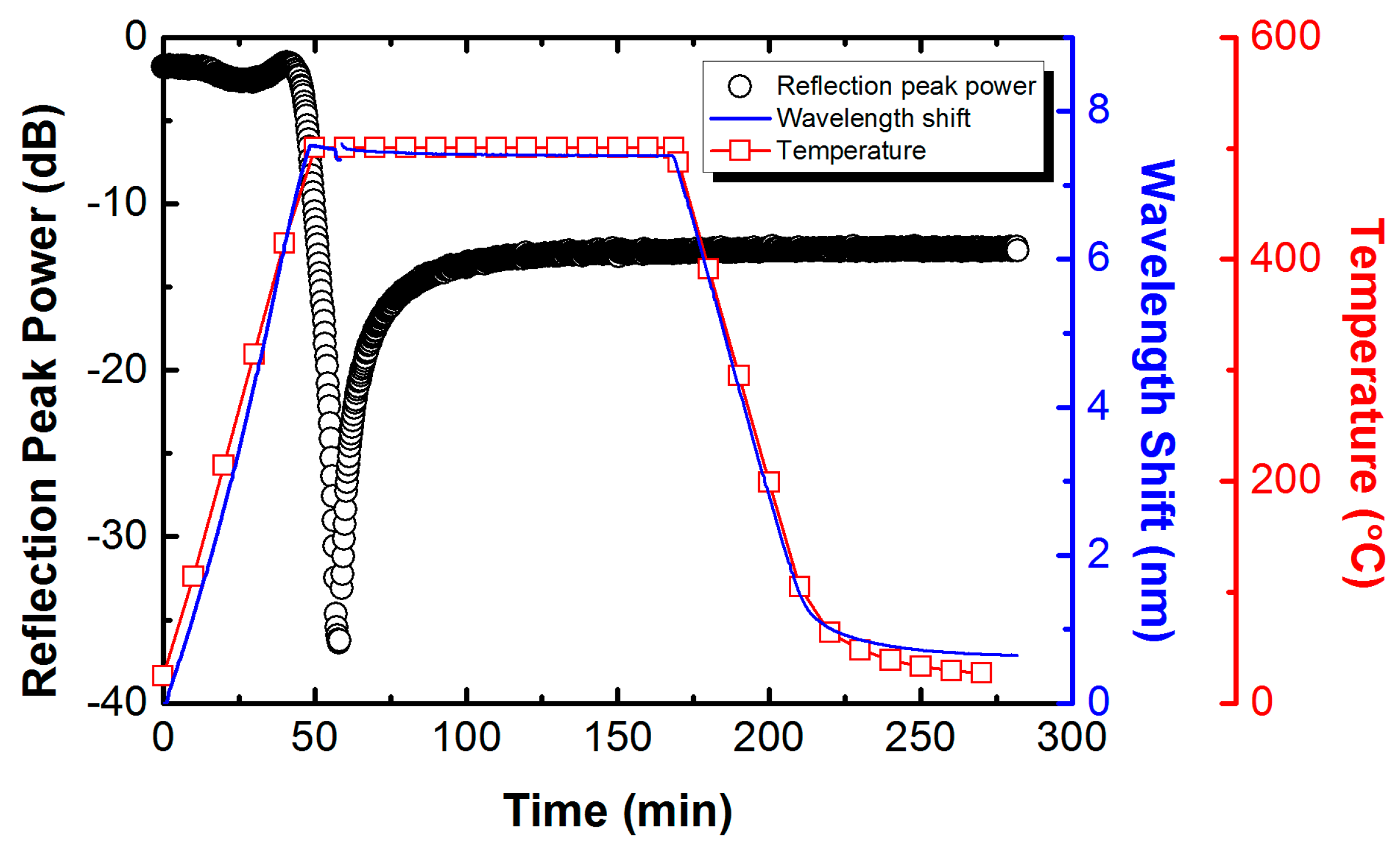
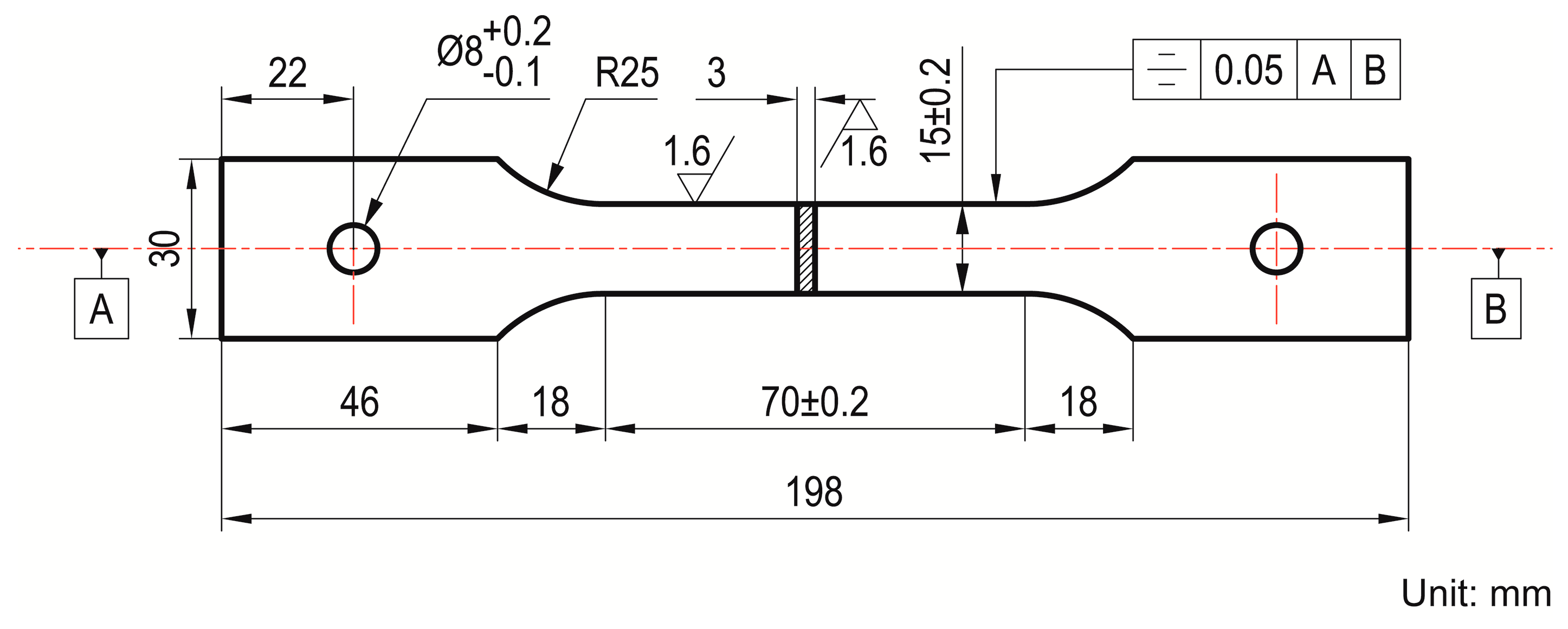
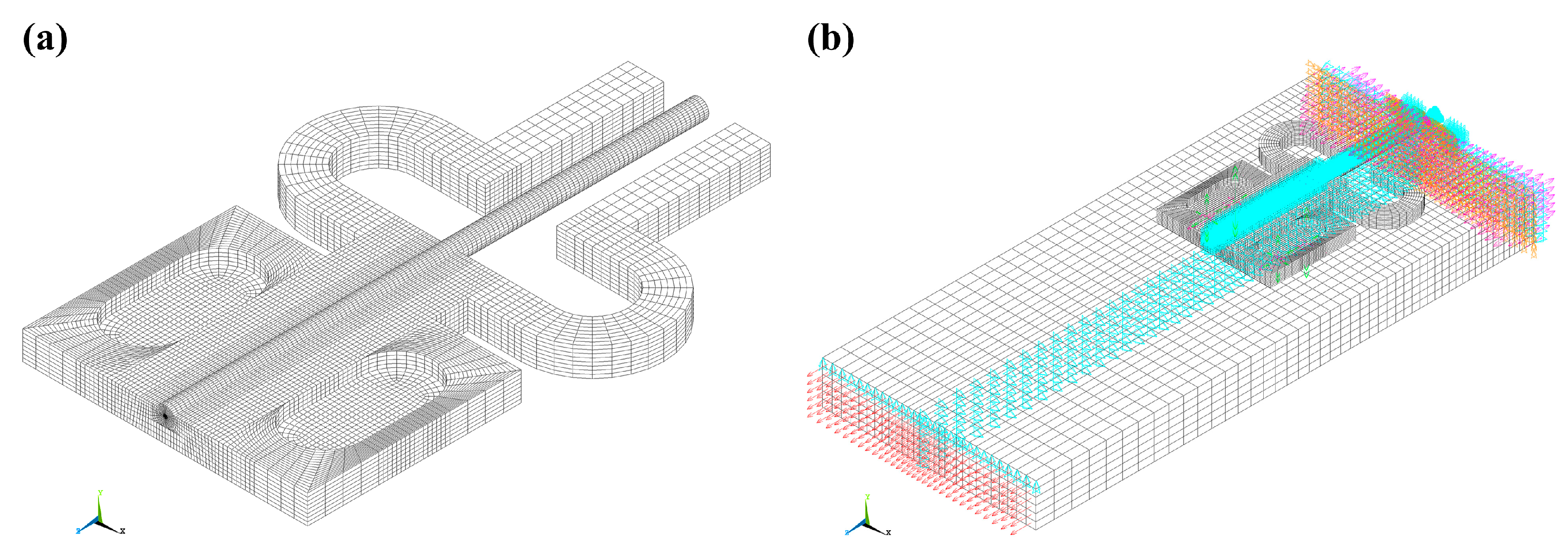
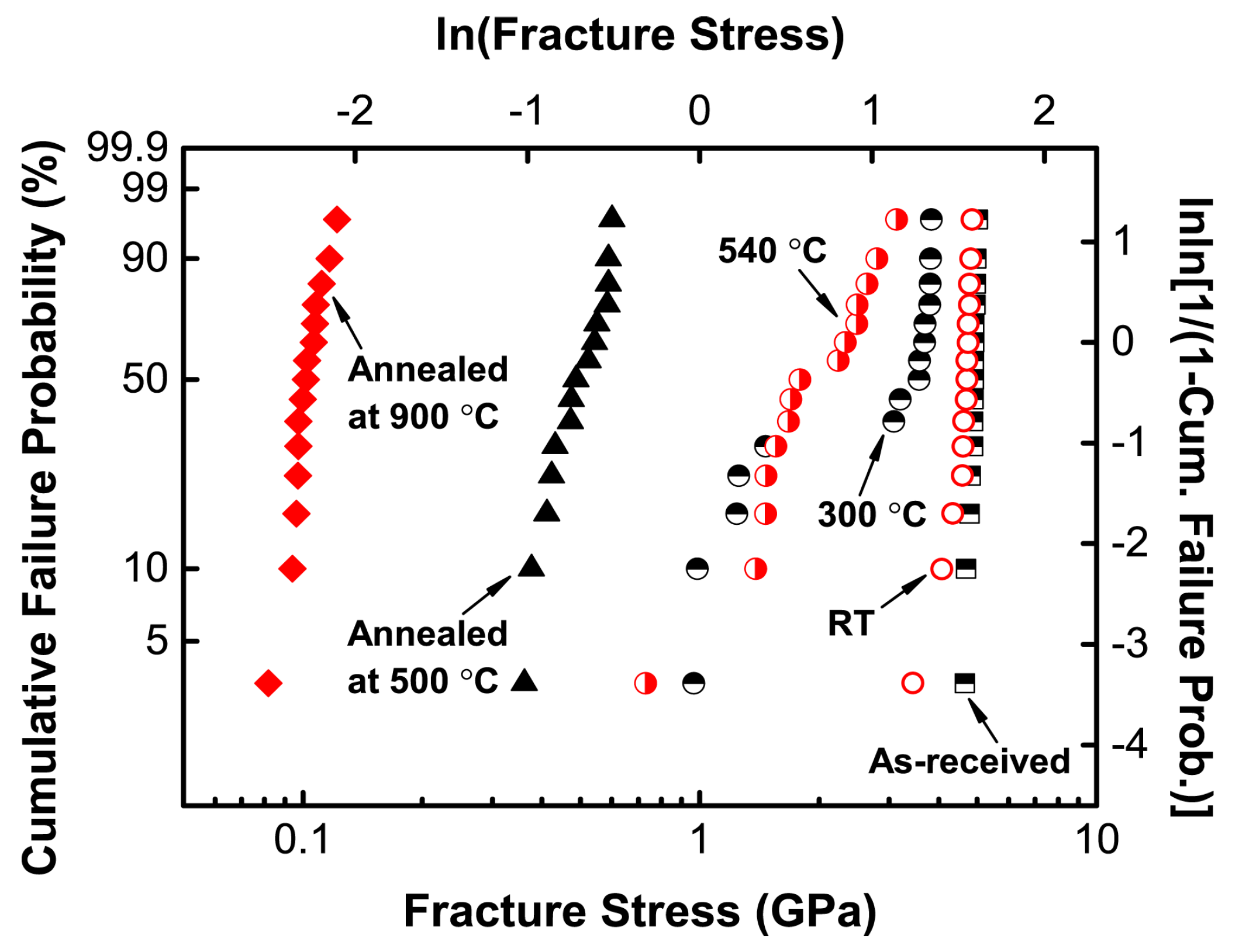
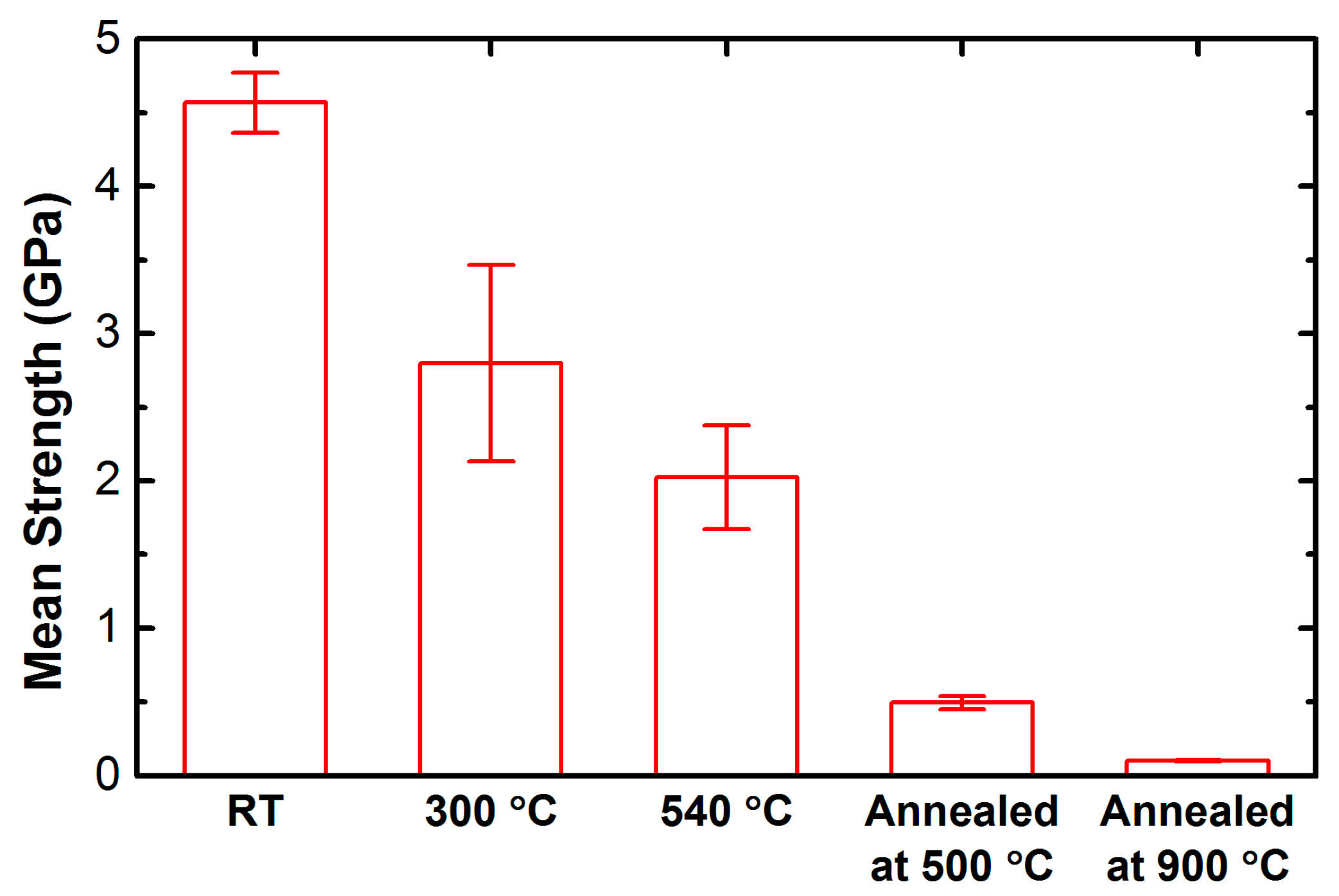
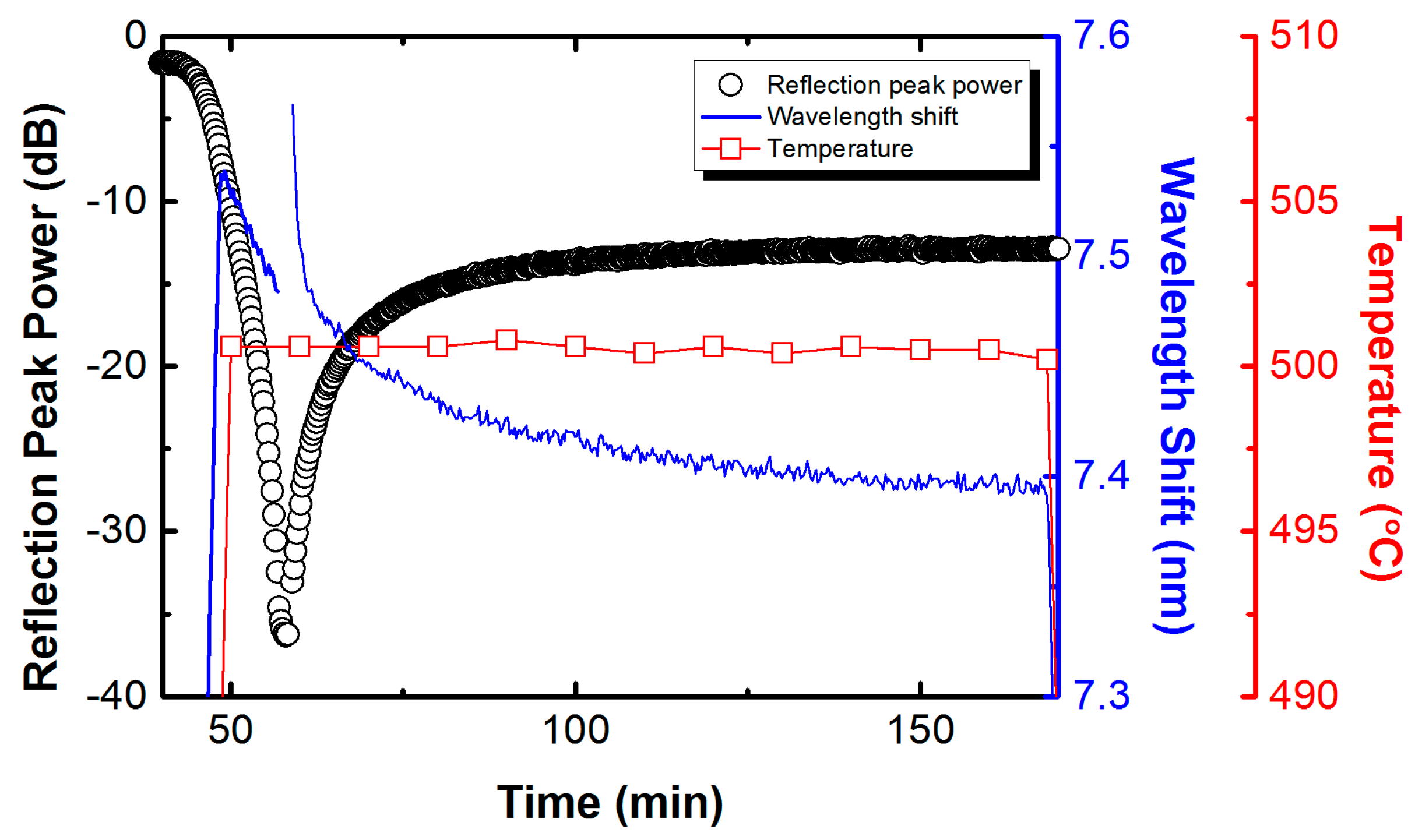
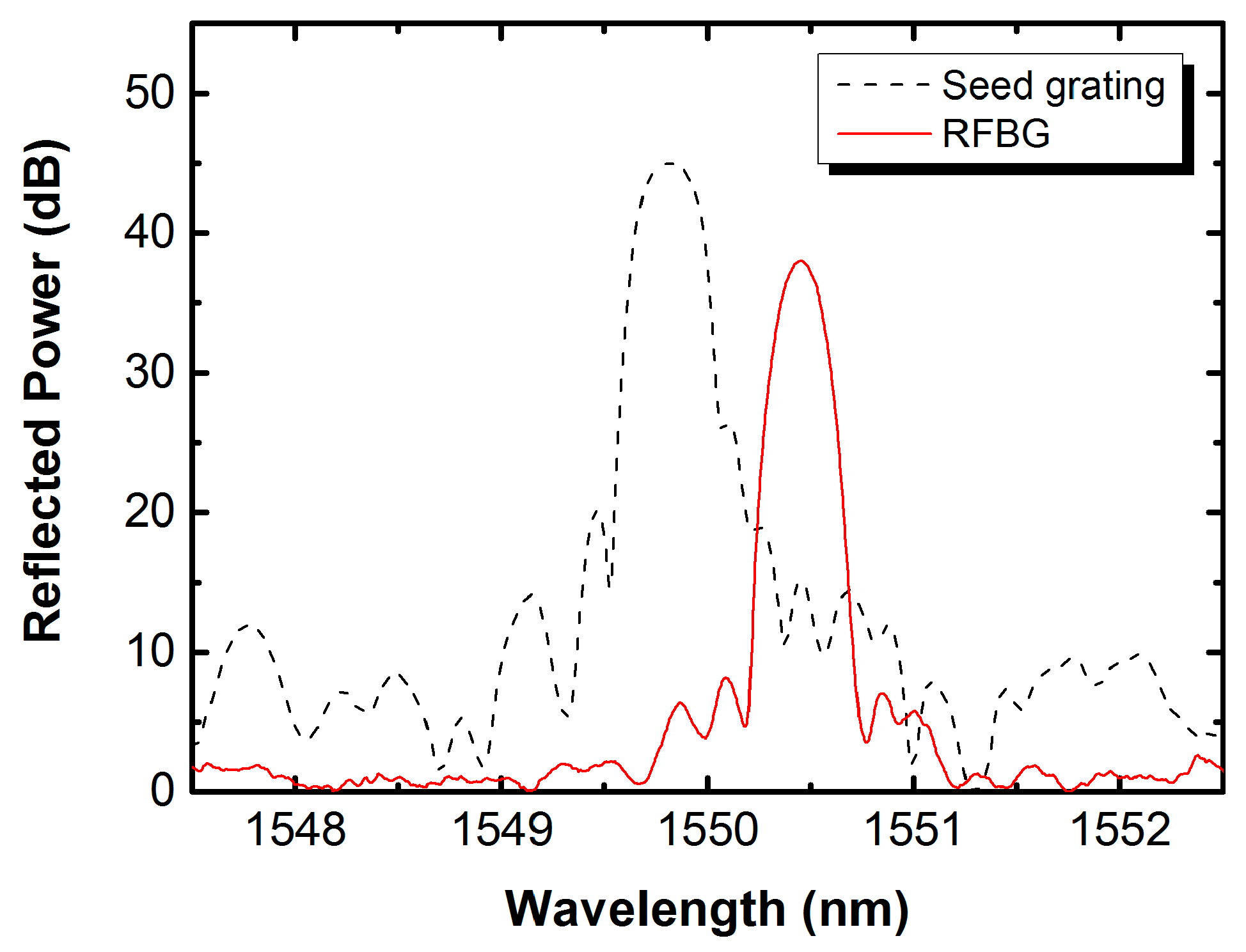
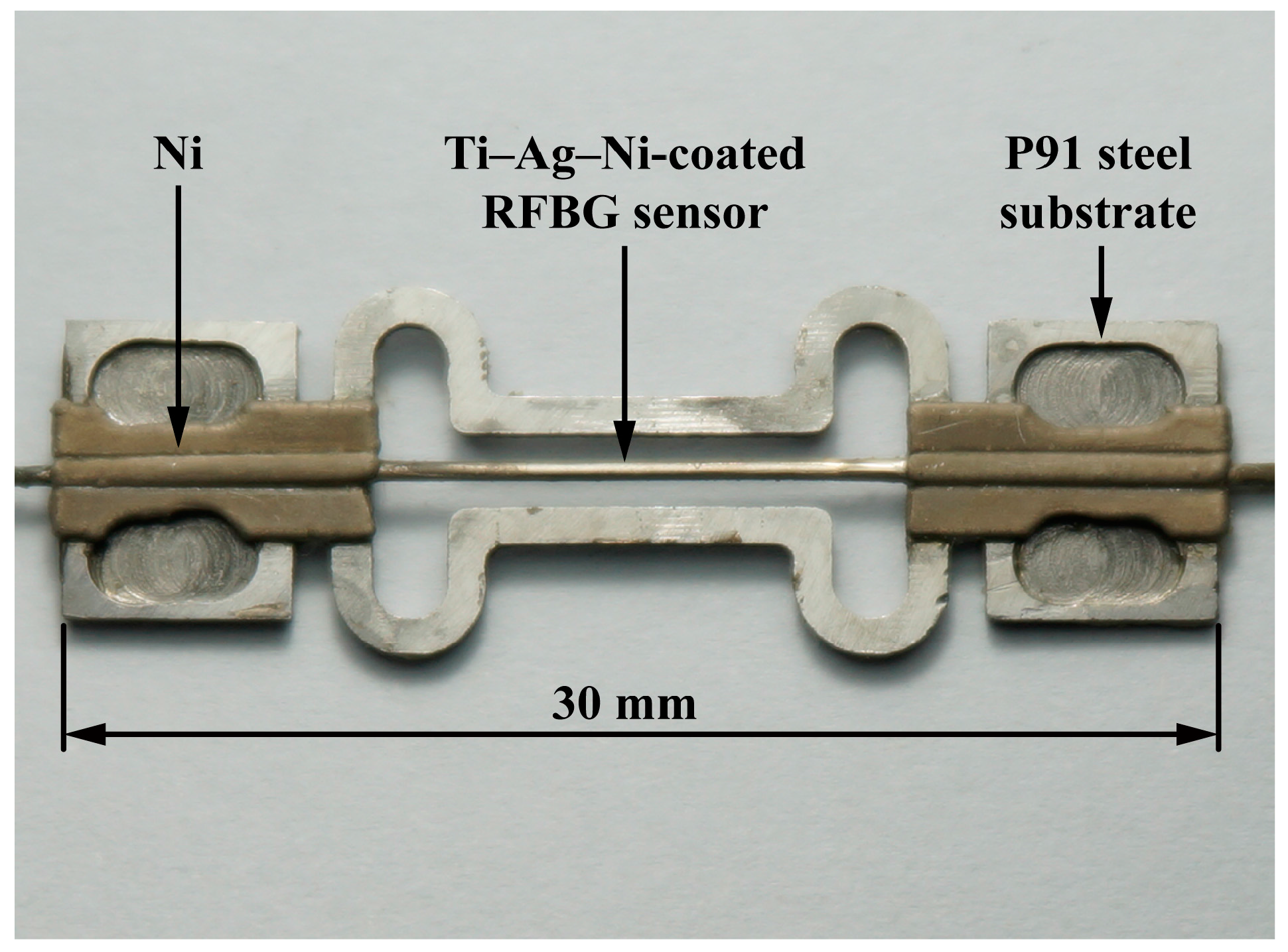


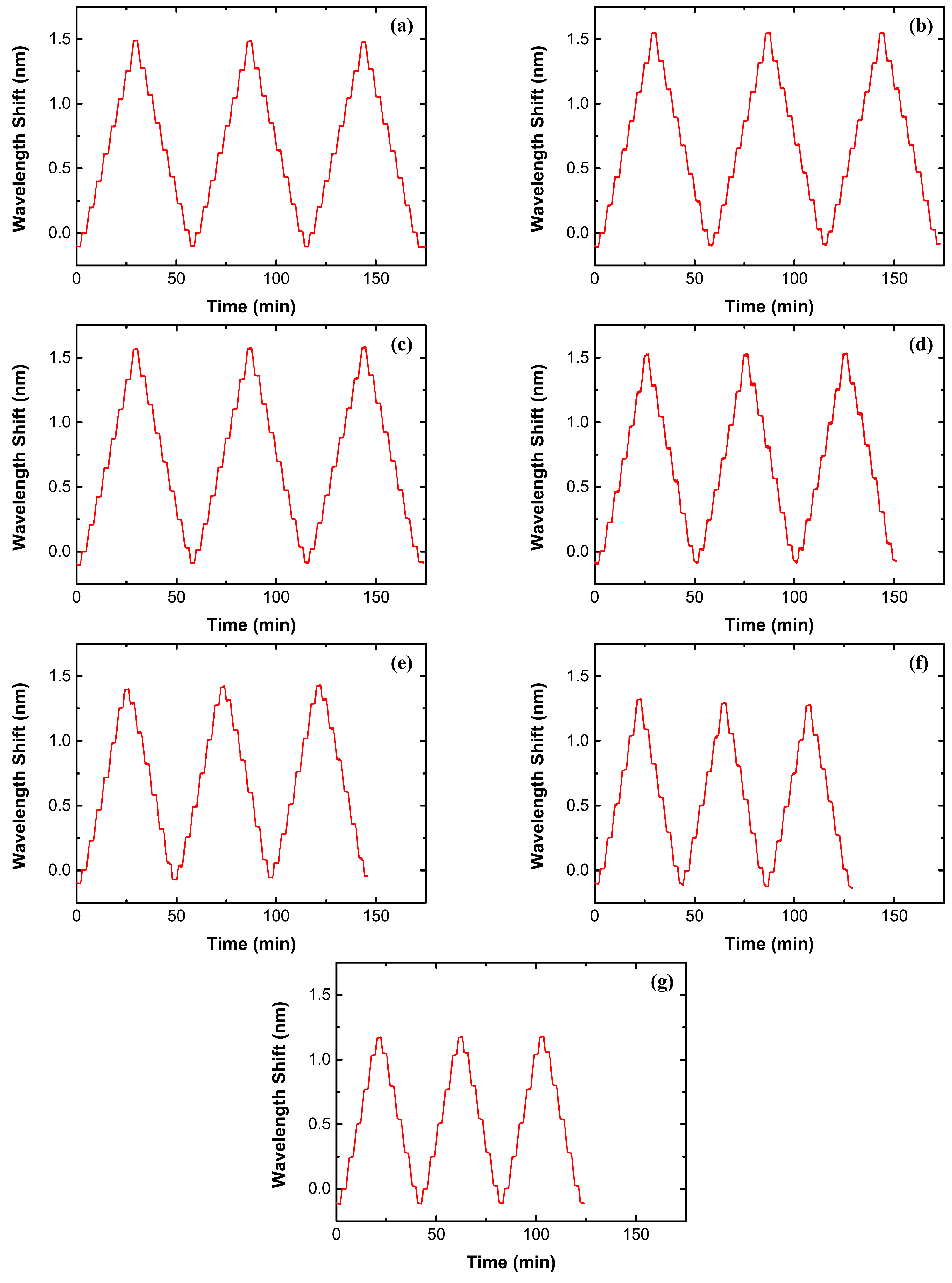
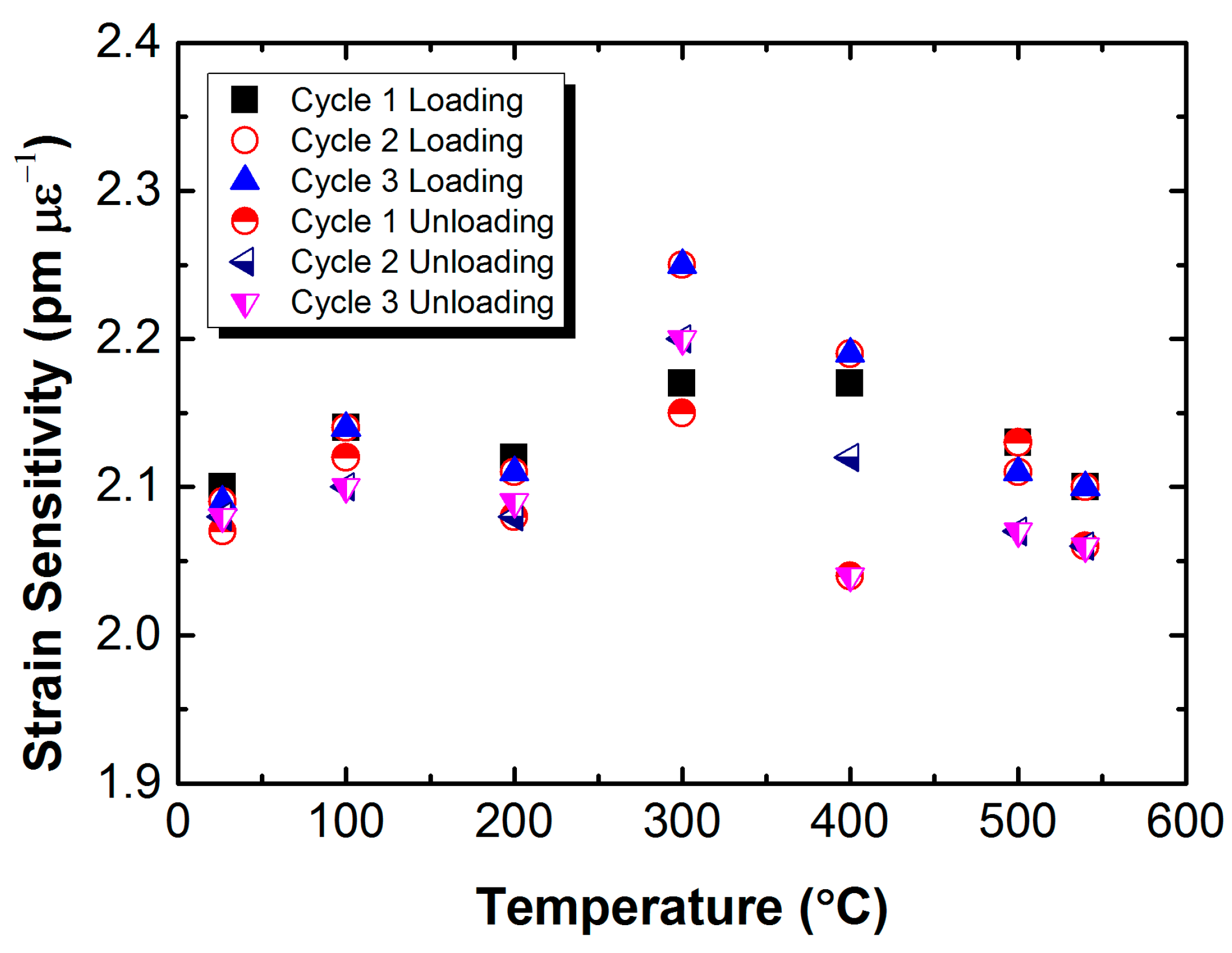
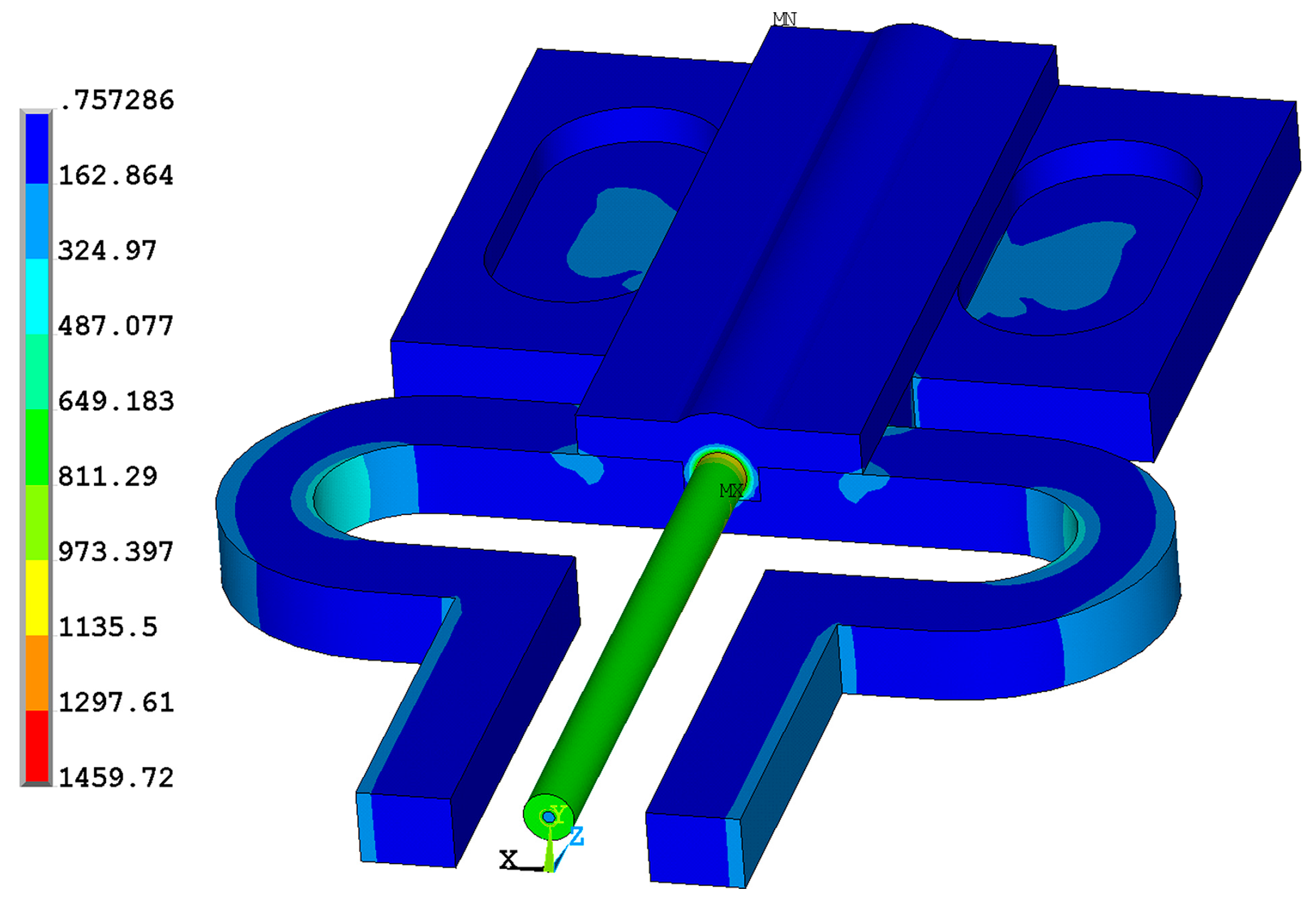
| Parameter | Temperature (°C) | ||||||
|---|---|---|---|---|---|---|---|
| 26.5 | 100 | 200 | 300 | 400 | 500 | 540 | |
| Efiber (GPa) | 72.9 | 73.8 | 74.95 | 76.04 | 77.036 | 77.936 | 78.28 |
| νfiber | 0.17 | 0.17 | 0.17 | 0.17 | 0.17 | 0.17 | 0.17 |
| Etitanium (GPa) | 116 | 112 | 106 | 100 | 95 | 89 | 87 |
| νtitanium | 0.34 | 0.34 | 0.34 | 0.34 | 0.34 | 0.34 | 0.34 |
| Esilver (GPa) | 76 | 71 | 65 | 59 | 52 | 46 | 43.5 |
| νsilver | 0.37 | 0.37 | 0.37 | 0.37 | 0.37 | 0.37 | 0.37 |
| Enickel (GPa) | 217 | 201 | 180 | 194 | 204 | 195 | 191 |
| νnickel | 0.31 | 0.31 | 0.31 | 0.31 | 0.31 | 0.31 | 0.31 |
| EP91 (GPa) | 220 | 216 | 210 | 204 | 195 | 185 | 179 |
| νP91 | 0.29 | 0.29 | 0.29 | 0.30 | 0.29 | 0.30 | 0.29 |
| µP91 | 0.15 | 0.15 | 0.15 | 0.15 | 0.15 | 0.15 | 0.15 |
© 2017 by the authors. Licensee MDPI, Basel, Switzerland. This article is an open access article distributed under the terms and conditions of the Creative Commons Attribution (CC BY) license ( http://creativecommons.org/licenses/by/4.0/).
Share and Cite
Tu, Y.; Ye, L.; Zhou, S.-P.; Tu, S.-T. An Improved Metal-Packaged Strain Sensor Based on A Regenerated Fiber Bragg Grating in Hydrogen-Loaded Boron–Germanium Co-Doped Photosensitive Fiber for High-Temperature Applications. Sensors 2017, 17, 431. https://doi.org/10.3390/s17030431
Tu Y, Ye L, Zhou S-P, Tu S-T. An Improved Metal-Packaged Strain Sensor Based on A Regenerated Fiber Bragg Grating in Hydrogen-Loaded Boron–Germanium Co-Doped Photosensitive Fiber for High-Temperature Applications. Sensors. 2017; 17(3):431. https://doi.org/10.3390/s17030431
Chicago/Turabian StyleTu, Yun, Lin Ye, Shao-Ping Zhou, and Shan-Tung Tu. 2017. "An Improved Metal-Packaged Strain Sensor Based on A Regenerated Fiber Bragg Grating in Hydrogen-Loaded Boron–Germanium Co-Doped Photosensitive Fiber for High-Temperature Applications" Sensors 17, no. 3: 431. https://doi.org/10.3390/s17030431
APA StyleTu, Y., Ye, L., Zhou, S.-P., & Tu, S.-T. (2017). An Improved Metal-Packaged Strain Sensor Based on A Regenerated Fiber Bragg Grating in Hydrogen-Loaded Boron–Germanium Co-Doped Photosensitive Fiber for High-Temperature Applications. Sensors, 17(3), 431. https://doi.org/10.3390/s17030431





